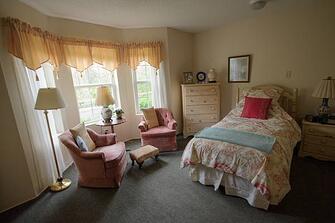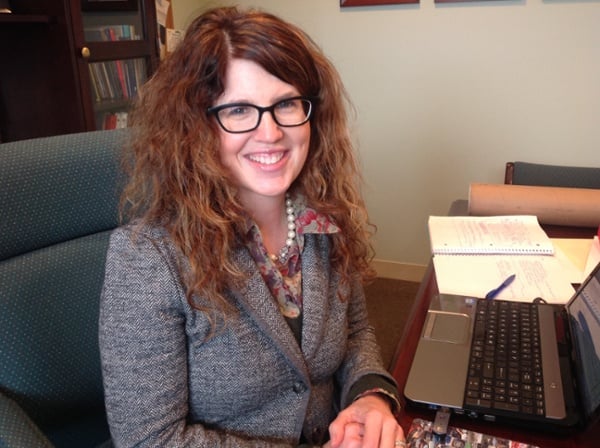 Depending on where you call home, your assisted living community may be prone to certain natural disasters. Storms, hurricanes, tornados or flooding may occur frequently in your “neck of the woods.” Assisted living communities are required to have disaster plans in place. If you are searching for a community for yourself or a loved one, find out what steps they take to keep residents safe and communicate with families.
Depending on where you call home, your assisted living community may be prone to certain natural disasters. Storms, hurricanes, tornados or flooding may occur frequently in your “neck of the woods.” Assisted living communities are required to have disaster plans in place. If you are searching for a community for yourself or a loved one, find out what steps they take to keep residents safe and communicate with families.
If living in your own home, how ready are you? Seniors residing in Florida, for instance, know all too well that they live in a location highly susceptible to tropical gale force winds. But it’s not just Florida that is at risk; most states along the entire east coast fall within this hurricane band in the hot summer months.
Since many senior living communities practice disaster preparedness, a comprehensive planning checklist with “before and after” procedures is updated and readily accessible, offered to minimize risks to elderly and disabled residents. Here, we share some of these planning techniques to help seniors and caregivers at home feel more equipped with their own “disaster-preparedness” decisions.
Tip #1 Structural Reinforcement – “Batten Down”
“Batten down;” use reinforcement materials to protect vulnerable areas of your home. Investing in shatter-resistant glass windows for older homes and putting up storm shutters and plywood are recommended as structurally effective measures. For more guidance, the state of Florida offers a wind mitigation handbook, accessible on the internet. Other states offer similar handbooks highlighting areas of high risks and flood prone zones, along with requisite safety actions to implement.
Tip #2 Individual Risks – Self-Preservation
During a severe weather threat, special consideration must be given to seniors living with mental illness and those with physical frailties and mobility issues who are wholly or partially dependant on caregivers for safety and support. Respite centers located in safely tucked-away areas offer “worry-free” options for care-givers as well as the much needed senior care assistance for loved ones who depend on it.
Tip #3 Adequate Supplies – Food, Water and Emergency Kit
A hurricane kit, evacuation bag and emergency medical kit are life-preserving tools recommended in the wake and aftermath of a disaster. Having a fully-charged mobile phone is also an essential communication lifeline.
Consider incorporating any of these tips within your disaster planning checklist:
- Have a family strategy – discuss how to respond to incidents of fire, severe weather, tornados, etc. Find safe, “refuge spots” within the home for each emergency type. Know the best escape route, depending on the disaster and your home floor plan.
- Instruct family members to turn on radios for information updates.
- Post emergency numbers near telephones for loved ones.
- Choose a family member or friend as the primary contact during disasters.
- Take a basic first aid/CPR class.
- Include these in your general disaster supplies kit: 72 hour food and water kit—first aid and prescription medications kit—batteries, matches, candles, flashlights, blankets, sleeping bags, rain ponchos and knee high water boots, hygiene products—sewing kit, duct tape, signaling devices, pliers and screwdriver—and make alternative arrangements for pets.
Statistically, seniors suffer the most during times of natural disaster. You can minimize the risks with a comprehensive “disaster planning” strategy. It is also reassuring to know that “moving” acts of kindness are often, thankfully, natural outcomes in communities that have suffered from a natural disaster.
Key Takeaways:
- Assisted Living communities must have emergency procedures in place. Next time you take a tour, ask how they handle severe weather and other emergencies.
- Your town and community may be prone to certain natural disasters like storms, hurricanes, tornados or flooding. If so, how ready are you?
- Senior living communities practice disaster preparedness, having at their disposal planning checklists to minimize risks to elderly and disabled clients. Learn from their example to keep yourself safe and prepared.
- Reinforce the safety of your home by investing in shatter-resistant glass windows and by putting up storm shutters and plywood.
- Respite centers in safely tucked-away areas offer “worry-free” options for care-givers and the much needed senior care assistance for loved ones who rely on it.
- A hurricane kit, evacuation bag and emergency medical kit are life-preserving tools recommended in the wake and aftermath of a disaster.





 Depending on where you call home, your assisted living community may be prone to certain natural disasters. Storms, hurricanes, tornados or flooding may occur frequently in your “neck of the woods.” Assisted living communities are required to have disaster plans in place. If you are searching for a community for yourself or a loved one, find out what steps they take to keep residents safe and communicate with families.
Depending on where you call home, your assisted living community may be prone to certain natural disasters. Storms, hurricanes, tornados or flooding may occur frequently in your “neck of the woods.” Assisted living communities are required to have disaster plans in place. If you are searching for a community for yourself or a loved one, find out what steps they take to keep residents safe and communicate with families.